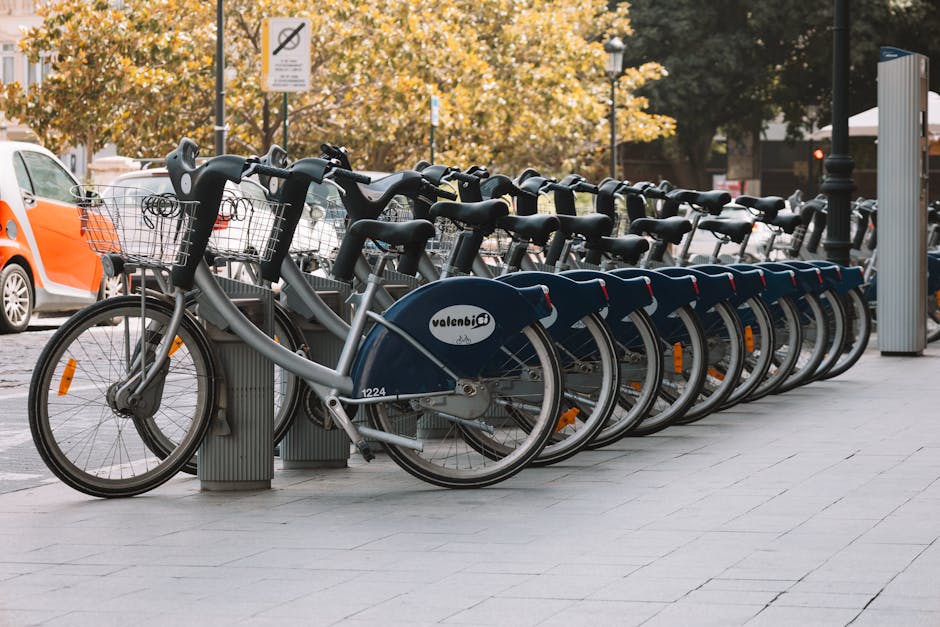
E-Bikes vs. Traditional Bicycles: Understanding the Advantages
Introduction to E-Bikes vs. Traditional Bicycles
E-Bikes and traditional bikes have some key differences. E-Bikes, also known as electric bikes, have a built-in motor that assists with pedaling. Traditional bikes, on the other hand, rely solely on pedaling power. E-Bikes are gaining popularity due to their ease of use and ability to tackle hilly terrain with less effort. Traditional bikes offer a more traditional cycling experience and can be a great way to stay active. Understanding the advantages of each type can help you choose the one that best fits your needs and lifestyle.
Advantages of E-Bikes
E-Bikes offer pedal assistance, making it easier to ride longer distances and tackle hills without getting exhausted. They are eco-friendly as they run on electricity, reducing your carbon footprint. E-Bikes are versatile and can be used by all fitness levels, allowing you to customize your riding experience. Furthermore, they provide a faster commute in urban areas due to their assistance feature, saving you time in your daily travels.
Benefits of Traditional Bicycles
Traditional bicycles are a budget-friendly option for those looking to stay active and get around town. Here are a few reasons why they can be a great choice:
- Affordability: Traditional bicycles are generally more affordable than e-bikes, making them a cost-effective option for many people.
- Simplicity: With no motor or battery to worry about, traditional bicycles are easier to maintain and repair.
- Fitness: Riding a traditional bicycle can provide a good workout, helping to improve your cardiovascular health and overall fitness level.
- Environmentally Friendly: Traditional bicycles do not require any fuel or electricity to operate, making them an eco-friendly transportation option.
These benefits make traditional bicycles a practical and sustainable choice for those looking to enjoy the many advantages of cycling.
Cost Comparison: E-Bikes vs. Traditional Bicycles
E-bikes are generally more expensive than traditional bicycles, but they offer features that can justify the higher cost. On average, an e-bike can cost anywhere from \(1,000 to \)10,000 depending on the brand, model, and specifications. Traditional bicycles, on the other hand, typically range from \(200 to \)2,000. While initial costs may be higher for e-bikes, they can potentially save you money in the long run due to lower maintenance and transportation expenses.
Environmental Impact
E-bikes have a lower environmental impact than traditional bicycles. They produce zero emissions and do not contribute to air pollution like cars do. By using e-bikes, you can help reduce your carbon footprint and contribute to a cleaner environment. Charging e-bike batteries may have some environmental impact, but it is generally lower compared to the emissions produced by traditional modes of transportation.
Health and Fitness Benefits
Electric bikes provide a low-impact way to exercise while still enjoying the outdoors. They can assist riders in tackling hills or longer distances, making it easier to get around and stay active. Riding an e-bike can help you increase your physical activity level without putting too much strain on your joints. Additionally, the pedal-assist feature encourages you to pedal more, improving your cardiovascular health.
Ease of Use and Convenience
E-bikes are easier to ride as they provide pedal assistance, making it less strenuous than traditional bicycles. You can navigate hilly terrains and longer distances without exhausting yourself. With e-bikes, you can arrive at your destination faster, saving you time and effort. Charging an e-bike is simple – you just plug it in like any other electronic device. Additionally, e-bikes allow you to adjust the level of assistance, giving you control over how much help you want with pedaling.
Maintenance Differences
E-bikes require less maintenance compared to traditional bicycles. Since e-bikes have fewer moving parts and no complex gear systems, they are easier to maintain. Traditional bicycles, on the other hand, might need more frequent tuning and repairs due to their intricate mechanisms. Regular maintenance tasks for e-bikes include checking the battery, motor, and electrical components, while traditional bicycles require adjusting gears, brakes, and chains.
Riding Experience: E-Bikes vs. Traditional Bicycles
When it comes to the riding experience, E-bikes and traditional bicycles offer different advantages. E-bikes provide electric assistance, making uphill climbs and long distances easier to handle. On the other hand, traditional bicycles offer a more physical workout, requiring you to pedal with your own power. E-bikes typically have various assist modes, allowing you to choose the level of help you need, while traditional bicycles rely solely on your pedaling strength.
Conclusion: Which is Right for You?
If you value convenience, speed, and assistance while riding, an e-bike may be the better choice for you. On the other hand, if you prefer the simplicity and exercise benefits of a traditional bicycle, that might be the right fit. Take into consideration your needs, preferences, and budget to determine which option aligns best with your lifestyle.








Leave a comment